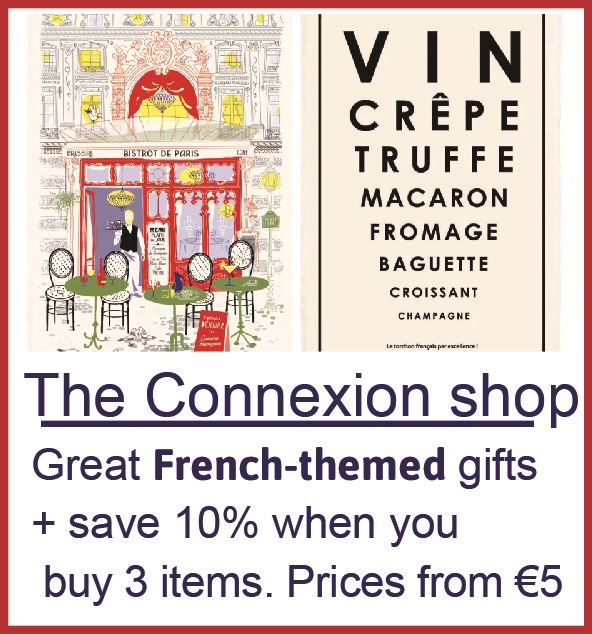Festive presents to give to gardeners in France
Sarah Beattie has plenty of Christmas gifts to make horticulturalists happy
Muscari (left) and hellebores (right) can be planted as great presents
Sarah Beattie
This article might just be superfluous, as a gardener is the only person who would be delighted to receive a load of you know what – well-rotted, of course!
However, there are many more sweeter smelling – and easier to wrap – alternatives you might contemplate.
If you want to buy flowering plants, the supermarkets are full of cyclamen, azaleas and forced bulbs but if you go to a nursery or garden centre the choice is much wider and you can find something that will last and give pleasure for years.
Flowering plants
The blooms on Christmas Box (sarcococca confusa), are not showy but their perfume is glorious.
The dark green foliage contrasts beautifully with the white flowers. It can stand in a pot on the front doorstep over Christmas as long as it doesn’t completely dry out.
Read more: My story: I moved to France and became a botanical artist
After the festivities, it needs planting in moist but not waterlogged soil – it copes with most soil types and shade.
Wintersweet (chimonanthus praecox), and daphnes or viburnum bodnantense are all winter-flowering and scented and would make lovely presents.
If you want something a bit more substantial, why not buy a winter-flowering clematis with an obelisk for it to scramble up?
My favourite is clematis cirrhosa Wisley Cream, which flowers profusely. Its creamy bell-shaped flowers exude their almost lemony fragrance in the slightest breeze – if you cannot find one locally you can source large ones (in 2-3 litre pots) online at promessedefleurs.com.
Other clematis cirrhosa – which are native to the Mediterranean, include the aptly named Jingle Bells and Christmas Surprise, Freckles (pink) or Lansdowne Gem (ruby red).
Obelisks range in price from around €20 for simple covered wire structures to hundreds for more elaborate Versaille-type constructions.
Some wooden ones are available with a planter beneath. Clematis will grow happily in a planter or pot if its roots can be cool and if it can get a deep enough run – a small pot won’t work.
Read more: Learning French: when and why do we say s’emballer?
Hellebore
The so-called Christmas rose is not a rose at all but a hellebore. Although they look lovely in the house when they are first purchased, they really don’t want to be there. Put them outside in a pot as soon as you can.
Generally hellebores don’t like too much sun, nor soil that is too wet, nor too dry – this Goldilocks of a plant really isn’t terribly fussy apart from that.
You could choose the classic white flowers with the dark green leaves which you see on Christmas cards or you could go for a Corsican, holly-leaved, hellebore which has small green flowers and is tall and stately. Alternatively you might like the dramatic almost black flowers of Harvington Shades of Night, Super Yellow or Penny’s Pink.
Little tokens
If you want to be able to post your presents or you just want a little token, there are lots of things gardeners appreciate, like good gardening gloves (I go through SO many pairs in a year – www.blackfox-shop.com have an enormous range); heavy duty hand cream and soap (Dille et Kamille do one with ground pumice which lifts ingrained soil and an excellent nail brush – online www.dille-kamille.fr); packets of seeds or even a garden diary or almanac.
Read more: French people do not usually send Christmas cards
A subscription to a monthly French gardening magazine might even help improve language skills whilst giving details of events and French suppliers. You might get offers through your French bank or check out kiosquemag.com or abonnement-magazine.fnac.com
Presents to plant
If you are a gardener and you want to plant up presents, here are a few ideas.
Visit vide-greniers or brocantes to find tureens, tea cups or bowls to plant up with forced bulbs. Hyacinths are the obvious choice, especially in blue and white china, but you can mass crocus or scilla in a big cup.
Plant in a gritty compost or bulb fibre with some small broken crocks or terracotta billes (available in garden centres) in the bottom. Tell the recipient not to over-water.
For something even more impressive, use a wide, shallower pot, fill it with the gritty compost and plant with three red amaryllis bulbs. Tuck in five small calocephalus – these are very cut-leaved silver winter bedding plants you can find at most nurseries.
Dark red amaryllis, as opposed to the more usual bright scarlet, are harder to find although dutch-bulbs.com will ship to France. I found some French suppliers but they were twice the price. The contrast between the deep velvety blooms and the frosted snowballs of the bedding is very pleasing.
Bare root peonies can be found in supermarkets and garden centres. If you plant them in a decent sized pot with some toning winter bedding such as polyanthus or violas and with a few small bulbs like muscari or narcissus Ice Wings, you can give a gift that keeps giving joy for months.
Wreaths don’t have to be made from pine branches or prickly holly. You can make smart, contemporary wreaths from stems of willow or cornus – look around your shrubs for long smooth, flexible stems.
Read more: Festive French phrases and words for the Christmas period
Willow can give you pale greens and yellows but cornus will have golds, reds, oranges and maroons too. If you fill a bucket with sand to weight it down, you will have a form to bend your stems around.
If you want something more rustic, weave honeysuckle prunings. You can go large – I made one over 1m wide. You can decorate with dried hydrangea heads or teasels, with the barest minimum spray of white, silver or gold. Add ribbon as appropriate.






























